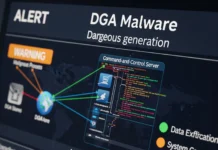Ensuring the physical safety of both people and property is paramount to the success of modern business, with over 6 million property crimes reported in the US each year costing an estimated $15.8 billion in losses and damages, security and IT staff must implement proactive defensive solutions.
Though this task may sometimes appear insurmountable, modern developments surrounding converged physical and cyber security systems have allowed property and business owners to create adaptive, intelligent and comprehensive security networks informed by data analytics and integrated security technology.
By utilizing the Internet of Things (IoT), individual facets of traditional security systems can be programmed to communicate freely and used to develop automated incident responses, perform remote administrative duties and ensure that teams always have access to actionable system data, with these factors in mind, here’s why all businesses need robust IoT physical security in 2023.
Physical and cyber security convergence
Businesses across all sectors are becoming increasingly reliant on internet connectivity to perform essential processes and daily operations. As of 2022, 26% of US employees work remotely, 74% of US employers are intending to implement hybrid work programs and 94% of enterprises use some form of cloud-based services, demonstrating the importance of sophisticated cyber security policies.
Many businesses taking their first foray into web-based operations may be well-versed in the benefits of physical security systems, but unaware of how best to protect themselves against cyber-attacks. Recent studies act to reflect this, finding human error to be responsible for 82% of data breaches.
By developing a converged physical and cyber security system using IoT devices, security and IT teams can work together to create responses and policies that reflect both physical and cyber security needs. This allows security staff to benefit from remotely monitoring IoT devices using cloud-based platforms whilst ensuring that connecting to such networks doesn’t invite cyber-attacks or breaches.
Protection from compromised networks
IoT security devices are now commonly utilized in the physical infrastructure of most workplaces, smart buildings use IoT HVAC controllers, motion sensors, CCTV cameras and access control systems to manage essential operations and ensure the protection of data, assets and employees.
Whilst the ability to adjust and operate these devices remotely, as well as view insights collected from different systems in one unified platform can lead to improvements in efficiency and productivity, poorly implemented security policies could lead to hackers gaining full control of building technology.
Businesses can avoid this risk by developing strict cyber security policies to protect physical IoT security devices. By implementing multi-factor authentication to access any networked device, employing network segmentation to protect against multi-device attacks and ensuring that all systems are regularly patched and updated, IoT devices will be less susceptible to common cyber-attacks.
Potential challenges for IoT security
Any robust IoT physical security solution will account for the unique challenges that the operation of networked security devices can bring. For example, as the demand for more IoT enterprise devices continues to grow, more manufacturers are seen to prioritize accessibility over security, which can lead to avoidable exploits remaining open to potential cyber criminals.
Business IT and security teams must ensure that all newly installed IoT devices are vetted for common weaknesses, this includes securing open network connections and changing default passwords which many providers choose to leave enabled on shipped IoT security products.
Other issues include DDoS and lateral network attacks, both of which can devastate unsecured IoT security systems and lead to serious data breaches or a total loss of physical security controls. To build effective commercial building security systems, teams must reconfigure IoT devices, such as commercial door locks, with unique policies.
Robust IoT security best practices
Whilst the implementation and operation of IoT security networks can be incredibly beneficial to most businesses, it’s vital that IT and security teams take the time to implement new technologies in such a way that potential exploits and weaknesses are appropriately covered by active protective protocols.
Primarily, all IoT devices must be tracked and monitored on a regular basis to ensure that no overlooked systems are exposed to potential threats. All devices must be updated and maintained by in-house teams with passwords frequently assessed and adjusted to minimize the risk of stolen credentials.
Staff training should be consistent and mandatory to reduce the chance of human errors leading to serious data breaches, and advanced cyber security measures should be implemented such as network segmentation, data encryption, multi-factor authentication and continuous data protection.

Photo by Christina @ wocintechchat.com on Unsplash
Final word
IoT security systems are quickly becoming an essential aspect of modern buildings and businesses, providing IT and security teams with effective, adaptive and informed protections against common physical and cyber threats whilst acting to improve incident responses and streamline workflows.
Though the benefits of these devices are numerous, robust security policies and procedures must be in place to ensure that networked systems are not compromised, and cyber criminals cannot access converged IoT technologies. By taking the time to develop robust IoT physical security protocols, teams can continue to improve essential procedures and build proactive business security systems.



































